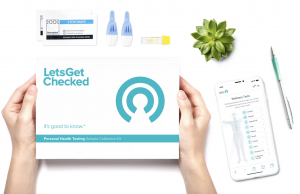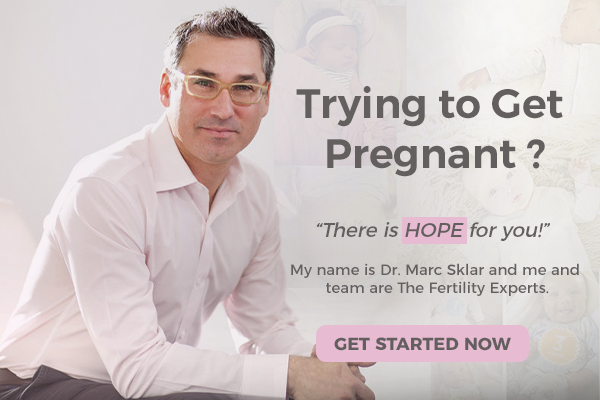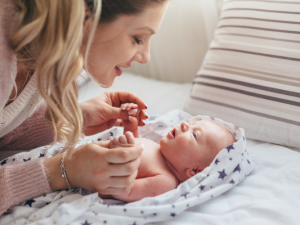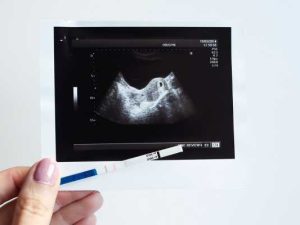Beating estrogen when trying to get pregnant
Transcription:
In this video I’m going to be talking about the importance of estrogen and that one condition that many of my patients never want to hear me talk about, which is estrogen dominance. So if you want more information about estrogen, estrogen dominance, and how estrogen affects your fertility, make sure you keep watching. I’m also going to give you my three tips, on how to control your estrogen, and make sure your estrogen is balanced and working for you. One of which is how to get your estrogen tested at home. That’s right, no doctors needed. So let’s get started with this episode of Fertility TV.
Hi, I’m Dr. Marc Sklar, the fertility expert, and I work with couples from all over the world, helping you get pregnant naturally. If you want more information on how I can support you, then you’ve got to subscribe to my YouTube channel. Make sure you hit that bell right here, and that you like this video, so that I know that you want more from me.
Before we start this video, I want to let you know that I am opening up my application for Discovery Calls for new patients. So if you want to work with me and my team, and see if we’re the right fit to help you get pregnant naturally, then I want you to sign up for Discovery Call. To see if you are accepted, then you’ve got to apply. So click on the link below in the description to apply for Discovery Call with me and my team.
All right, so as we get started with understanding estrogen and potentially if you have estrogen dominance, I think the first place for all of us to start is to understand estrogen, what it means, what it does in the body, where it comes from, what it affects, all the ins and outs of estrogen.
I’m going to try to keep this as simple as possible, but I think most of you don’t understand truly what estrogen is and what it does in the body. You might have a positive view of it, you might have a negative view of it. So we’re going to start there and then we’re going to get into what you can do to support proper hormone balance and estrogen balance in the body.
Okay, as always, I’ve got my notes right here so that I don’t forget anything and I don’t have to keep it up here. So if you see me look down, that’s why. When we are looking and trying to understand estrogen, the first thing to understand is where does estrogen come from? Estrogen is primarily produced in the ovaries. However, small amounts of estrogen are also produced in the adrenal glands, in the fat cells, and in the brain. We’re going to get into those and the significance of that a little bit later on in the conversation, but I just want you to understand that from the beginning.
The other important piece as we’re talking about estrogen and hormones is understanding the hierarchy of estrogen. Yes, there is a hierarchy. That means there are some hormones that are, I don’t want to say more important, but they are higher up on the cascade of hormones and so there are certain hormones that feed into other hormones and affect those hormones. So when we’re talking about the primary hormones that all of you would probably associate as the primary hormones in our body, such as estrogen, progesterone, and testosterone, those are not at the top of the cascade.
They’re actually at a third level in the process. So there are other hormones that feed into these primary hormones of estrogen, testosterone, and progesterone. So it’s important to understand that there’s many things that influence our primary hormones and our reproductive hormones. There’s other ways that we can support those hormones or affect them negatively as well because of where they fall in that cascade.
If you didn’t know the three E’s of estrogen.
This is E1.
This is E2.
This is E3.
The next tier is like often, many of you just talk about estrogen as in one entity. We say, oh, estrogen production. Well, there are multiple types of estrogen in the body and the three main types that we’re going to talk about today are E1, E2, and E3. When all of you are doing hormone testing and are talking about estrogen levels in your hormone tests, usually you’re talking about E2, estradiol, but there are two other estrogens. E1 is estrone, and E3 is estriol. Okay?
The primary main estrogen in the body that is the predominant hormone for all of you with fertility and trying to conceive is also the main hormone that supports the release of eggs from the ovaries around ovulation. This is E2. This is estradiol and when you go and do all of your testing, that’s primarily what you’re testing for. There are some additional tests sometimes that I run, or others may run, that get into all the other details of these hormones, these three other estrogens. But primarily all of you are looking at E2.
Increased amounts of E2, specifically as it relates to or its relationship with the levels of progesterone in the body can cause heavy periods or PMs symptoms, slew of other things, one of which you might use the term called estrogen dominance, which we will get into in just a little bit. Then E3, estriol, is the weaker of the three and most of you don’t even test for this or do much with this hormone.
Estrogen is responsible for a lot of key features in a woman’s body, primarily E2 or estradiol is responsible for the key female features, breast tissue and so forth. Remember before where I talked about fatty tissue as producing a minimal amount of estrogen, a small amount of estrogen, this is one of the reasons why because it contributes to the shape of a female. After puberty, it’s estrogen and estradiol, actually specifically estradiol here, is responsible for a woman’s menstrual cycle, and it helps to begin the ovulation process and the growth of the endometrium as you’re going through your menstrual cycle.
So estrogen starts to increase, which starts to nourish the follicles and the eggs to mature and grow so they can get closer to and start the process of ovulation. The estrogen also nourishes the endometrium, the tissue in the uterus that an embryo would theoretically at some point in the future implant into. So because of those key things, it’s really important that we have enough estrogen and a healthy amount and proper balance of estrogen.
But often estrogen gets a bad rap from some key reasons. One is, it can be a contributing factor as it relates to endometriosis, fibroids and because many of you out there have a negative connotation with the birth control pill, which I do, I’m not the biggest fan of it because of potentially having too much or a lot of estrogen or giving too much estrogen to the body, we have these negative connotations associated with estrogen for those reasons and potentially others. But I also want you to know that estrogen is important and it is eight key hormone that we all need good amounts in and proper balance with.
Estrogen is also very important as it plays an important role in proper brain function, urinary tract health, blood vessel health, your digestive system, your gut health, immune function, bone health, breast health, skin health, hair health, pelvic muscle health. Estrogen plays a big role in all of these areas. So now hopefully you can see that, one, it’s an important hormone. Two, it does play a big role in a lot of different aspects of your health and your body, not just menstrual health and reproductive health.
The reason why we see estrogen impacting all these other areas is because there are estrogen receptors throughout the body. Those estrogen receptors influence those key systems or organs or tissues that I just mentioned because there are estrogen receptors there and that’s where estrogen will bind to. So now getting into the big question of estrogen dominance. This is something that I get patients asking about all the time. Do I have estrogen dominance? Is estrogen dominance a problem? Is it real? What does it cause? What problems does it cause in the body?
So the first thing that we have to understand when we’re thinking about estrogen dominance is everything that I just said before. That we do know that estrogen is important. It’s an important hormone, and we do need enough of it. We don’t want to have so little estrogen that we can’t perform the proper functions in the body and we feel crappy. So having proper estrogen balance is important, but having too much can cause some significant issues.
But here’s the trick. Yes, you can have too much estrogen or you can have a lot of estrogen, but if you have enough progesterone to balance that out and support it, then you might not notice that you have too much because you have sufficient amounts of progesterone to support it and keep it in check. There is a feedback and a natural play and rhythm between estrogen and progesterone. So typically when we talk about estrogen dominance, it’s not just, is estrogen too high? Is, do we have enough progesterone to support that?
So yes, you can have lower amounts of estrogen here, but you could also have low amounts of progesterone. You still might have symptoms of estrogen dominance. You might have higher amounts of estrogen and higher amounts of progesterone and not have any symptoms because it’s keeping it in check. So there is a relationship and an interplay between those two that needs to be accounted for and addressed as we think about the term estrogen dominance.
Some symptoms though that you might have a imbalance of estrogen and progesterone or estrogen dominance, too much estrogen, would be heavy periods and clots, maybe menstrual pain, pelvic pain, fibroids, endometriosis, and another extension or aspect of endometriosis is adenomysosis. So these are some key symptoms. There are others, but see, these are some of the big ones that I tend to see in practice when it comes to estrogen dominance.
A while ago in this video I talked about fat tissue and I mentioned that there were several tissues in the body that did, or organs or glands, that did create a small amount of estrogen. Well, fat tissue is one of them. Fatty tissue actually acts as an endocrine gland and it does produce estrogen. That is why we need enough body fat or a woman, actually men as well, you need enough body fat to have healthy, normal menstrual cycles. Men don’t need that to have normal menstrual cycles, but we all do need healthy balance of estrogen in the body.
Having too much body fat can cause an excess amount of estrogen, so if you’re overweight, that can contribute to estrogen dominance or excess estrogen. Same thing goes for men. If we do have too much body fat in the body, we will produce more estrogen and men don’t need so much estrogen in the body, certainly not as much as women. So that needs to be accounted for in hormone balance for men and women.
Okay, so before, I talked about gut health and GI function as an important aspect of hormone balance and estrogen balance and support. I did also mention other systems and glands. In this video, I’m just going to kind of focus on some of the key ones that I want you all to take into account because of what you can do to support them and influence their proper health at home. There are other aspects of estrogen and hormone balance that I’m not going to discuss in this video, but I do plan to do them in other videos, so stay tuned for that.
So estrogen, okay, I’m going to try and keep this as simple as possible for you and somewhat linear, so try to stay with me. Estrogen is used and when it’s done being used in the body, it gets sent to the liver to get deactivated and kind of eliminated out of the body. From the liver it goes to the intestines, to the gut, and if the gut is functioning properly and healthy and has a healthy amount of microbiomes, then this process can be done easily. It eliminates it through your bowel movements and everything is functioning properly.
But if your gut is not functioning properly and is not healthy, and we can go through a whole slew of conditions with gut health that might influence this, candida, yeast overgrowth which can be viewed as the same thing, leaky gut, imbalance of proper healthy bacteria and microbiome, the list goes on and on. Then there is a higher likelihood that your estrogen will become activated again and sent back into the body through the intestinal wall to be used.
If this happens repeatedly over and over, then we start to create an abundance of estrogen in the body, excess estrogen or estrogen dominance because you’re not eliminating it, excreting it properly. So you could see if the cycle’s happening properly, then we have proper bowel movements. Everything functions properly. It goes out and you eliminate any extra estrogen that the body has. But if it’s not, then it goes back in. It gets reactivated in the intestines, it goes back into the bloodstream and gets sent back into the body. Then we have an abundance of estrogen.
So when I started this video, I think you all learned how important proper estrogen balance and hormone balance is. Now you also hopefully know how important healthy digestive function, gut health, and liver health is to creating proper healthy balanced hormones and not feeding that negative feedback loop and system when it comes to estrogen balance and production.
So when I talk about healthy digestive function and I get all these inquisitive looks from patients and I do spend a lot of time mentioning diet and the importance of diet and healthy food intake, this is exactly why. Digestive health is essential and often it’s overlooked when we’re looking at hormone balance, estrogen balance, and fertility. It can’t be, it shouldn’t be, and this is exactly why we need to make sure we’re taking care of our digestive system, our gut health, and our diets.
All right, first and foremost, if you don’t know what your estrogen levels are and they have not been tested, then that is step number one. That’s my tip number one, you’ve got to get tested. We want to test, not guess. I always say knowledge is power. So the more information you know, the better decisions you can make on your fertility journey, your reproductive journey and your overall health. So getting your estrogen tested is step number one.
My favorite way to do that is right here with Let’s Get Checked. You can get the description for ordering that test kit below and if you want a discount for ordering that so you get it a little bit less expensive, than you can just use the coupon code DRMARC20, and you can get a test kit for ordering your estrogen. Now you can just get estrogen on its own or if you want to get some of your other reproductive hormones, which I typically do recommend, if you haven’t had those done, then make sure you go ahead and do that as well in conjunction with the estrogen.
The best time to test your estrogen levels for what we want here is on day two, three, or four of your menstrual cycle. But it is really important that if you have not had that done, we want to know where that is so that we know what changes you need to make in my next steps, step two and step three. So step two is a liver detox. Giving your liver some love. That’s usually how I refer to it. We want to support proper liver function and proper detoxification function as well.
There are three phases to liver detoxification, or to detoxification, two which happen in the liver. One is in the intestines so that you can poop regularly and get it all out. We talked about how important the liver is in deactivating estrogen, and then we talked about how important your proper gut health is to getting and eliminating estrogen out of the body with your stool. So that’s why we start with a liver detox.
So the first step to a liver detox is to clean up your diet. If you’re eating crappy, then that has to stop. You’ve got to cut out the sugar, you’ve got to cut out the processed foods, the junk foods, the fast foods, the sodas, anything that might be influencing your liver health. Alcohol, that’s a big one. So I want you all to clean up your diet. That is essential. I know I repeat this over and over, but now you know why it’s so important and what you need to do. Then you can take some key nutrients or supplements.
Now I will say many of these key nutrients can be found in a balanced diet, in good, healthy, quality, organic food. But if you need some additional support, then you can also take those in supplement form. So vitamin B complex, preferably methylated, vitamin C, magnesium, NAC, inositol cysteine, and milk thistle. Those are some key ones to help with the detoxification process in conjunction with a good healthy diet and some exercise.
If you’re just going to take the supplements and not clean up those other things, then you’re not going to support your liver properly and it’s going to be much harder for it to detoxify and deactivate the estrogen and then eliminate it. So we talked about healthy diet and eating organic good produce. So we’ve got some carrots and beets. But if you can’t get all your proper food in your diet, then sometimes you do need some supplements as nutritional support to help with detoxification and hormone balance. So that’s what we have there.
Okay. Then step three, cleaning up your household products and your personal products. This is something I definitely talk about, maybe not as often as I do about food, but it is important. All of these things, if we are consuming, and by consuming, I mean either ingesting or putting on our skin, our skin is an organ and it does consume these things or they are in our environment. They can influence our estrogen, potentially put some phytoestrogens into our body or some xenoestrogens, and impact our estrogen receptors and cause all sorts of imbalance as it relates to estrogen hormones.
Plastic is bad.
Stainless steel and metal is good.
So first and foremost, if you are still drinking out of a plastic bottle, get rid of it. Glass or stainless steel are essential. My parents often laugh at me at how many stainless steel and glass bottles we have in the house. But that’s because we use them. I’m not a fan of plastic, so get rid of the plastic bottles if you are still using them. No synthetic cleaners and personal products. There’s all sorts of chemicals and toxins in your cleaners. I’ve talked about this often. You can make your own.
There’s so many easy ways to clean up your house, but slowly but surely as you run out of any of these toxic chemicals that you are using to clean your house or use on your skin and your body, then I want you to swap it with something better for you that is not synthetic and that is not going to throw off your hormones in any way. So clean up the synthetic cleaners, get cleaner, healthier personal products as in makeup, shampoo, conditioner, moisturizer, sunscreen, whatever. Anything you’re using that’s going on your skin needs to be cleaned up.
Then the other thing that many women don’t clean up and forget about is tampons, pads, and their lubricants. These are going in your body. So we want to clean them up. There’s no reason to be using these synthetic ones. You can buy plenty. There’s plenty of options now that are organic, healthy and have no chemicals and no toxins in them whatsoever. So a nice swap from those synthetic ones is to get organic and potentially even make other additional swaps from there. But I think we’ll take baby steps here.
Then for many of you, if you are using lubricants, the majority of lubricants out on the market, one, may not be healthy for fertility and two, have parabens and other chemicals and toxins that are not healthy for your hormones. So we want to swap those out. I am going to give you some resources down below to help you get some of these products easily for you. So if you want some of those supplements or you want to make an easy switch with some of these household cleaning products and the lubricants, then I’ve got those links down below for you to check out and hopefully use and make that swap.
Okay, that’s a wrap. That was a lot of information, so if you stuck with me all the way to the end then, thank you very much. I am sure that you learned a lot and hopefully you are ready to make changes to get proper estrogen balance and hopefully support your fertility in the process. If you want more information just like you just saw, then check out these videos right here. Again to wrap up. Make sure that if you like this video, give me a thumbs up. If you are not subscribed to my YouTube channel, then make sure you do so that you know when I’m producing a new video by clicking right here on that bell so you can get notified.
Again, please leave a comment below if this video was valuable to you and you found the information useful and it’s going to influence your fertility journey and process. If you want more videos just like this, you can check them out right here. If you want to sign up for Discovery Call with me and my team, you can do that right here as well. I also put all the links down below, or you can click right here to apply to qualify for one of my programs. Remember, the link to the testing and any of the other resources that I mentioned in this video, you’re going to find down below in the description. Until the next video, stay fertile.
H.O.P.E Coaching – Heal naturally to Overcome infertility & get Pregnant by Empowering your body
Who is this for: Any women trying to get pregnant for +6 months
It includes: 60 minutes coaching call with Dr Sklar, The Fertility Expert
During this 1 hour online fertility consultation with Dr Sklar, or his team of natural fertility experts, you will get all the fertility support you need, we will review your case, give you recommendations and create a next steps for a personalized plan to help you get pregnant
The H.O.P.E Coachingis a 60 minutes call where we will go over your fertility case and give you customized recommendations, that work for YOU. Me and my team of fertility doctors are here to help you improve your fertility to get pregnant.

Keep learning about How to EMPOWER your fertility naturally with weekly Fertility TV Episodes!
Almost 50,000 subscribers can’t be wrong! A fresh approach to natural fertility and women’s health, with tons of easy health tips on how to get pregnant and fertility science with a dash of humor! Get the weekly Fertility TV episodes with all you need to know when trying to get pregnant






